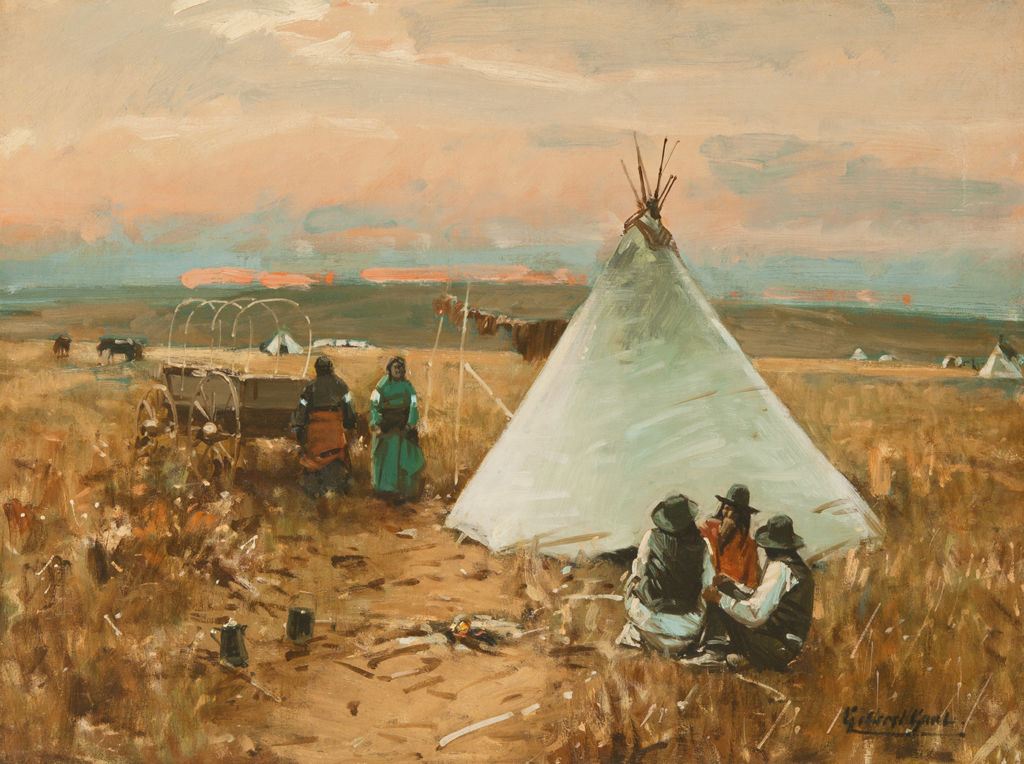William G. Gaul was one of the five special agents who took the census of 1890 among the American Indians, illustrating the “Report on Indians Taxed and Indians Not Taxed.” The report was an extensive undertaking by a special team of artists who recorded indigenous life in texts, sketches, photographs, and paintings. Traveling extensively Gaul gathered impressions firsthand and in 1890 offered an unvarnished picture of life on the Sioux reservation. He did not dress up his American Indians or show them engaged in activities of an earlier day. Rather he recorded exactly what he saw. The tone of The Pow-Wow gives it a dimension beyond the literal, making it a statement of the Plains Indian in transition. Gaul observed “The appearance of the Indian is fast changing. The day of buffalo robes and buckskins is passing away. With the Sioux breechcloths are no more. The Indian is no longer a gaily bedecked individual. Most of his furs and feathers have disappeared simultaneously with the deerskin.” There is a fine feeling for the expanse of the Dakotas here but also a sense of confinement, a realization that the horizon has permanently shrunk for the buffalo-hunting warriors of yesteryear who now listlessly wait at the agency to receive their beef rations on issue day.
Search the permanent collection
The Pow-Wow
Artist: William G. Gaul Year Completed: c. 1890 Medium: Oil on canvas Dimensions: 18.125 x 24.125 inches



